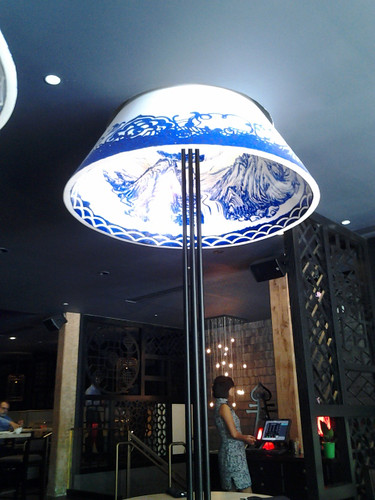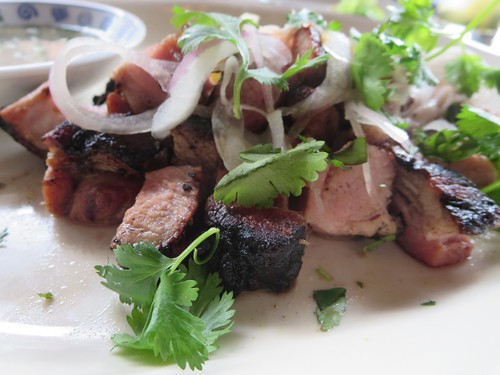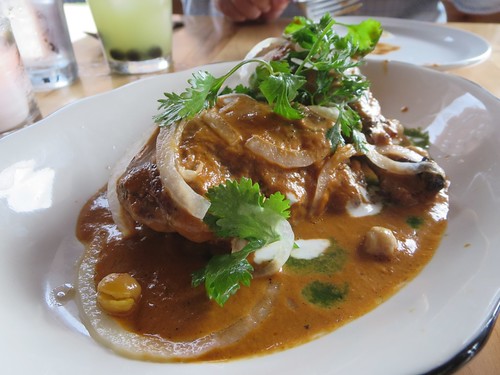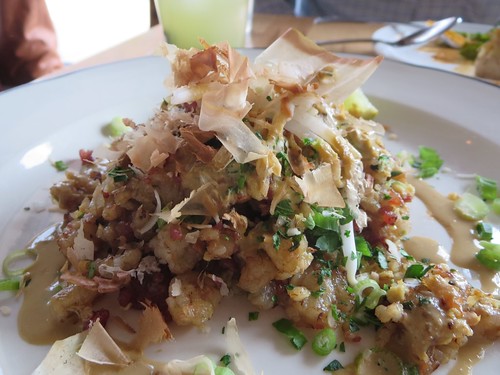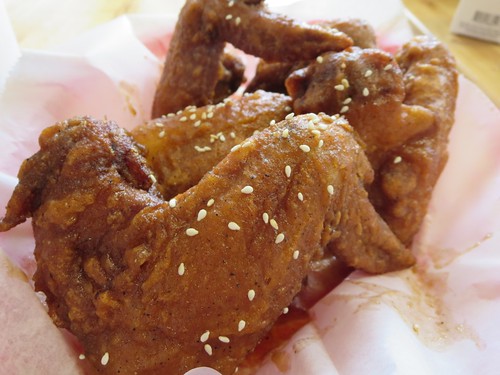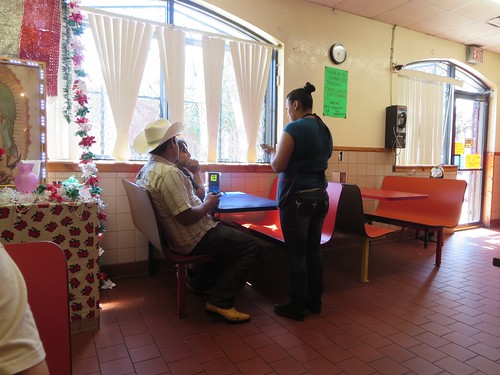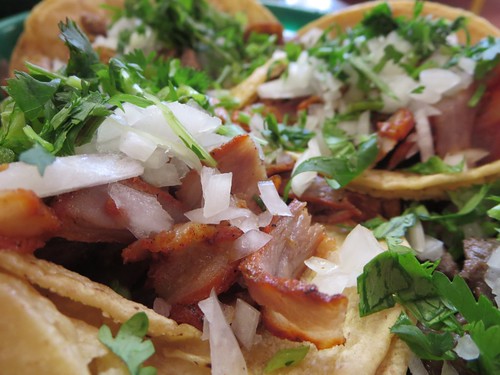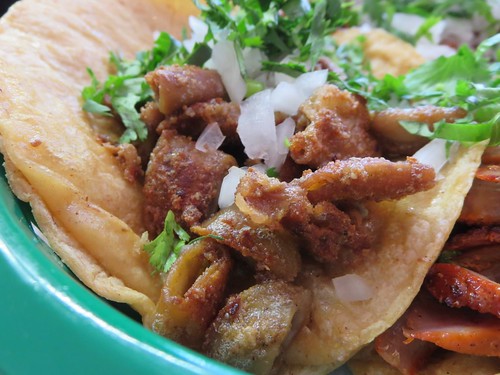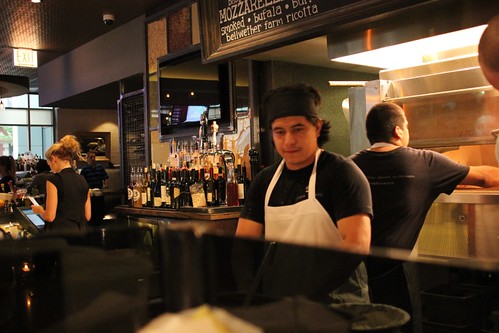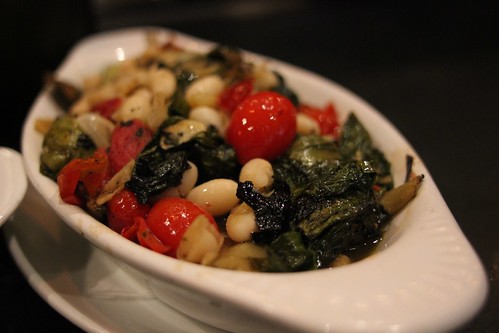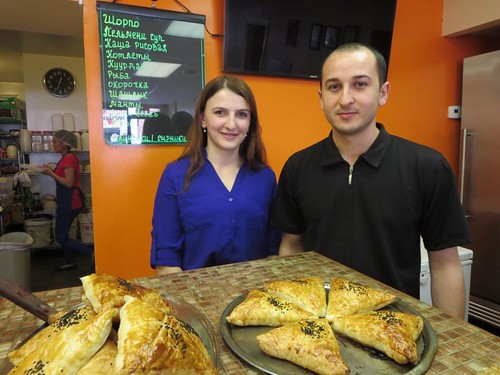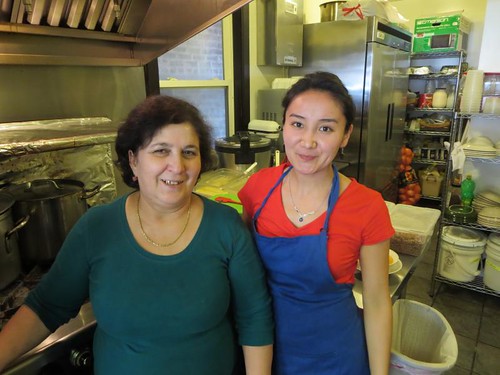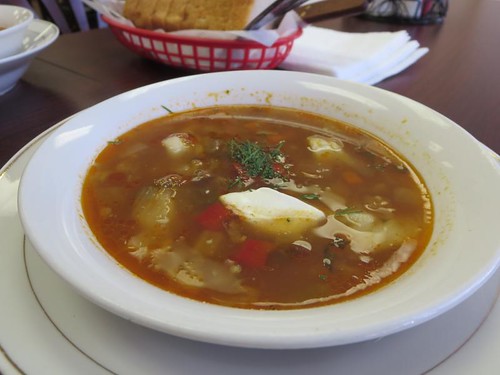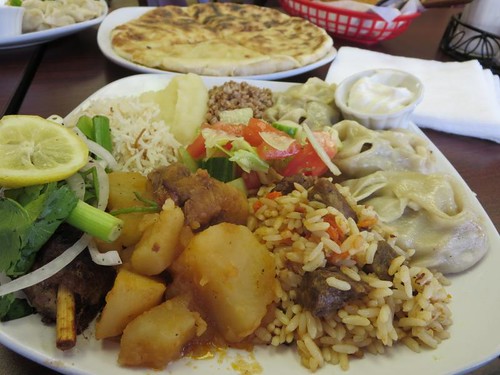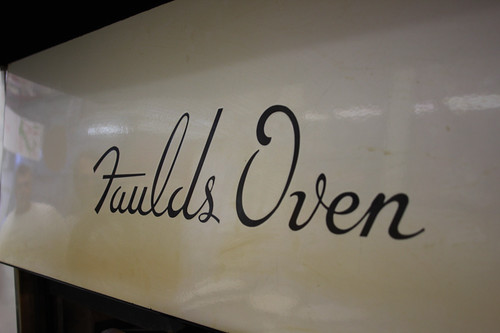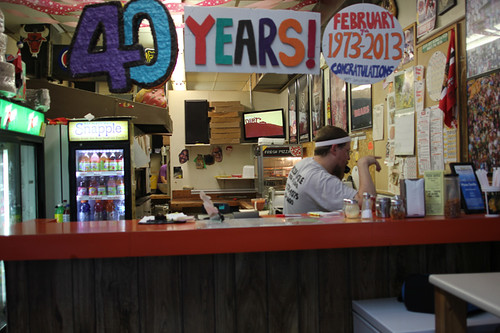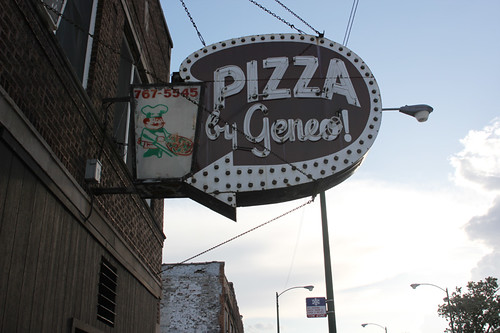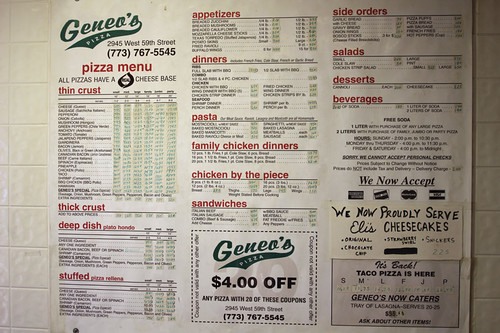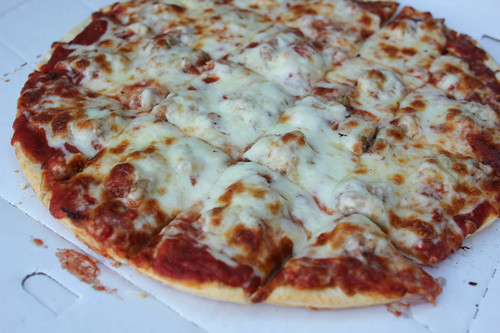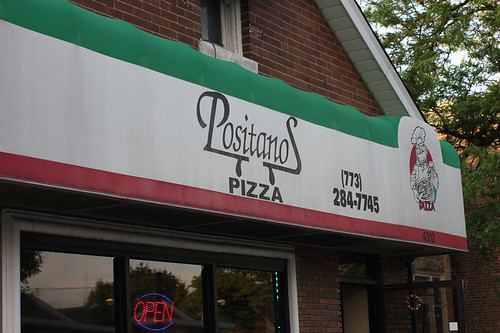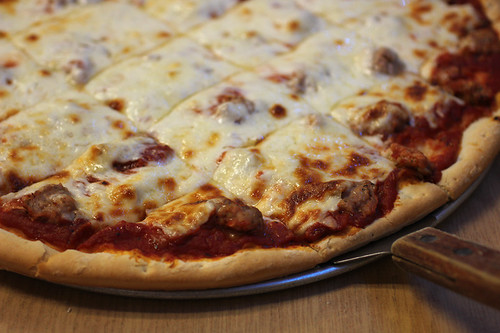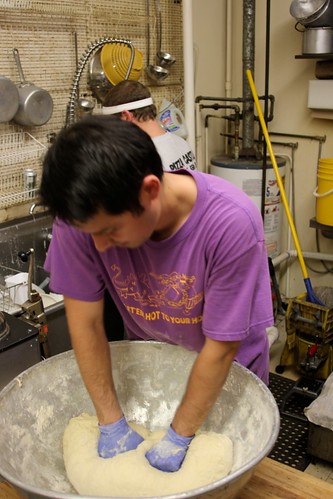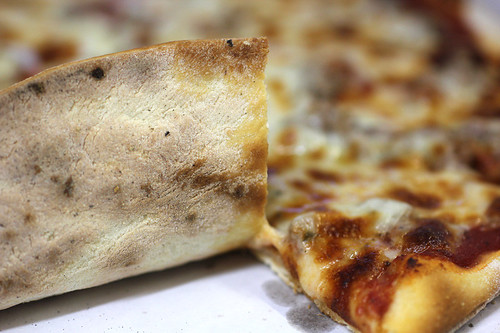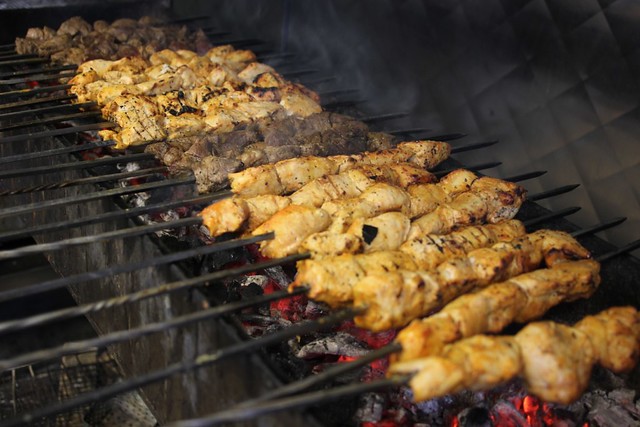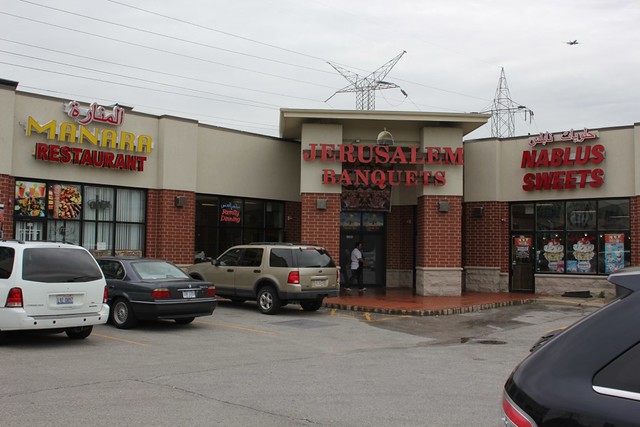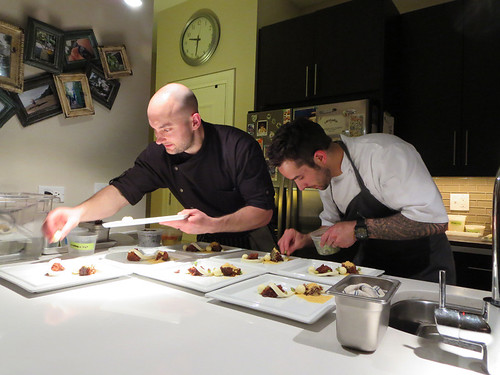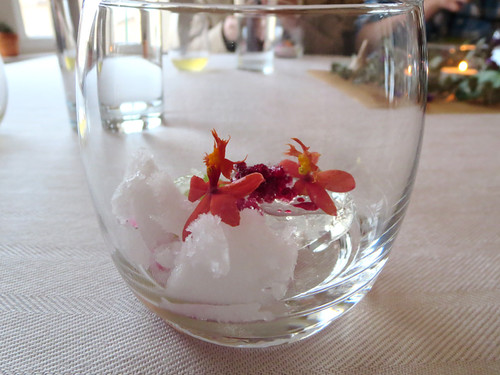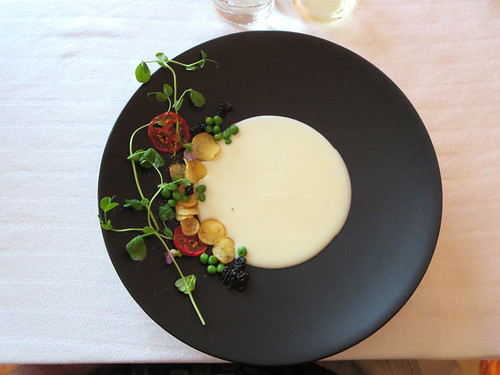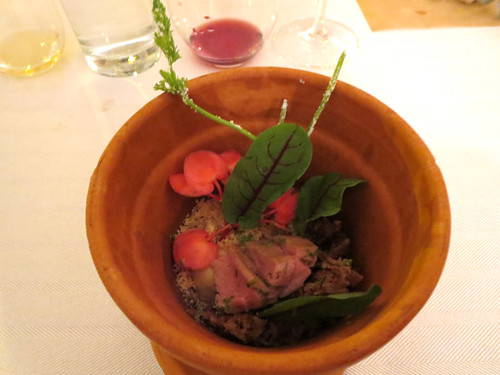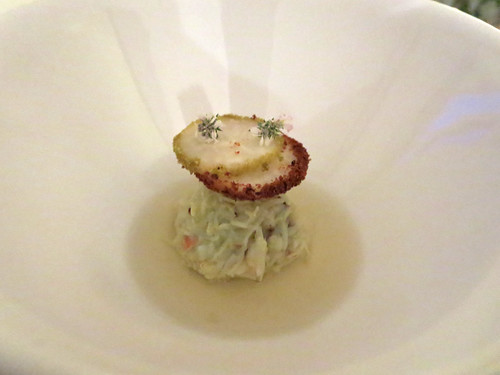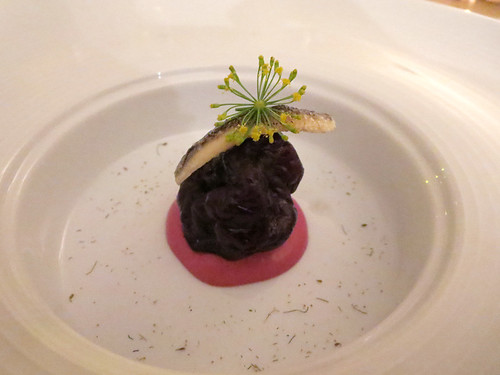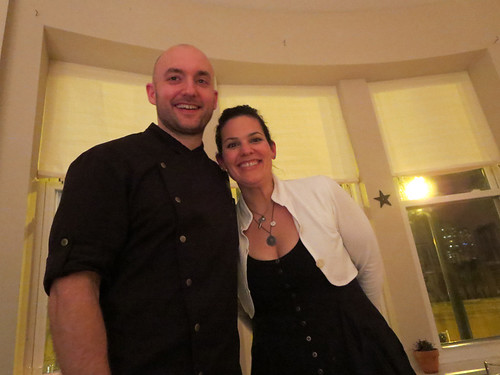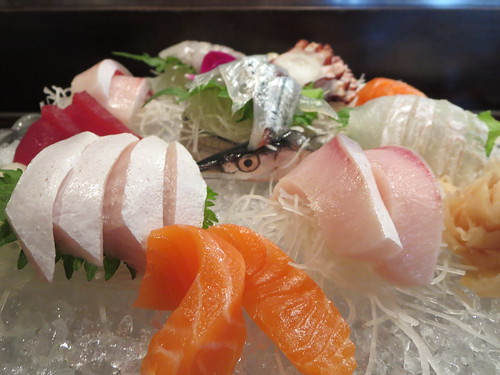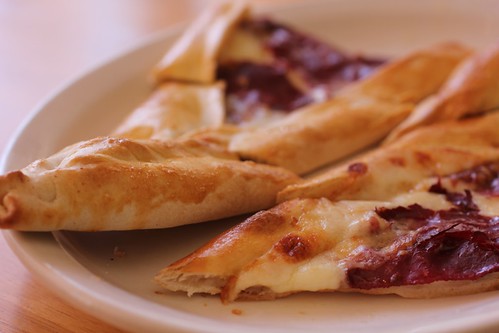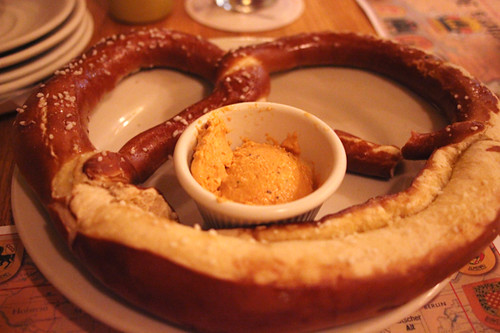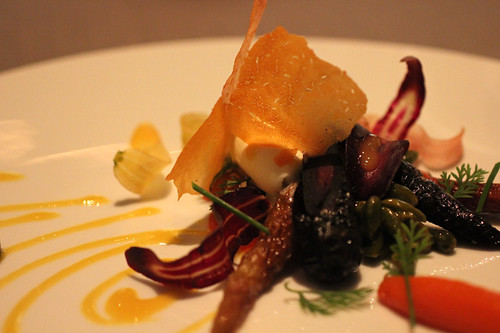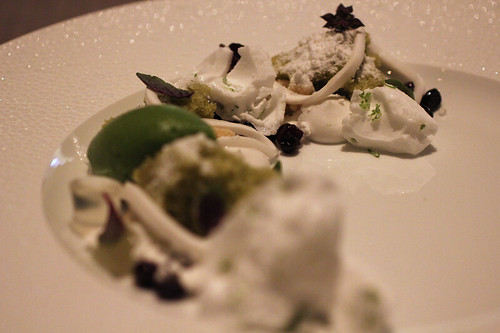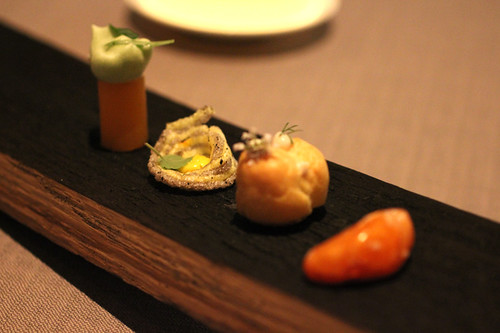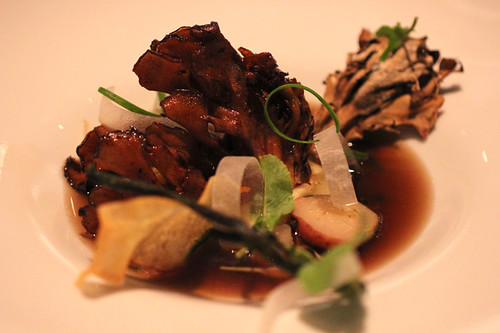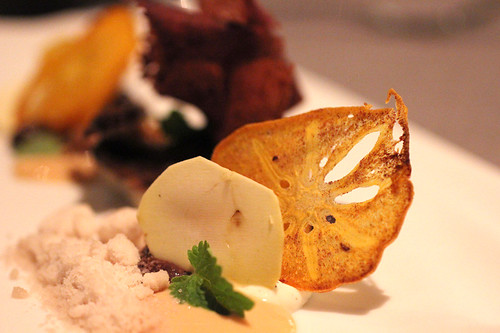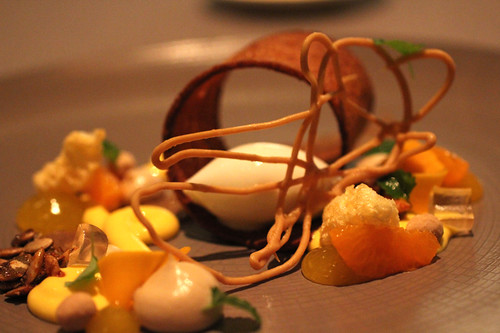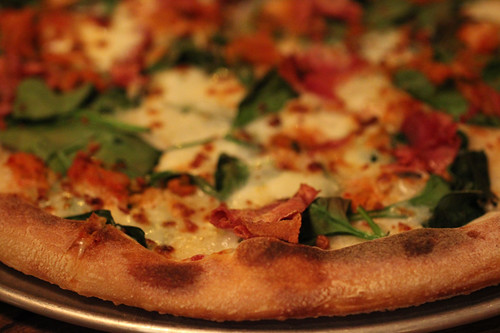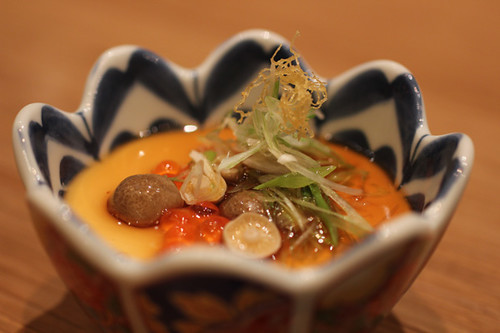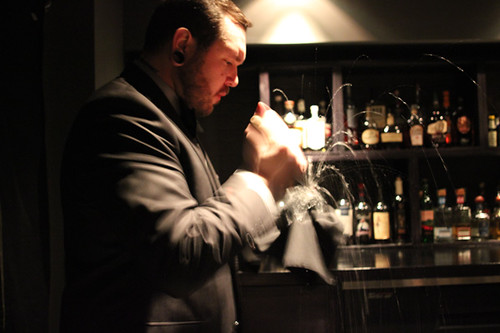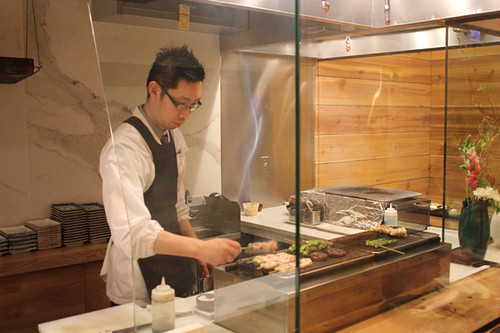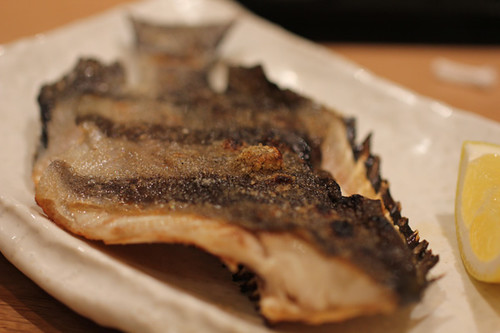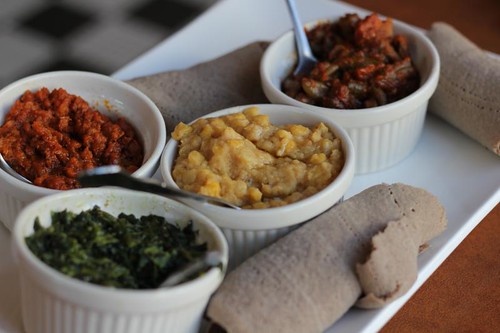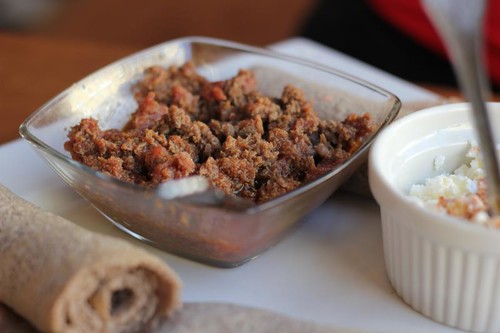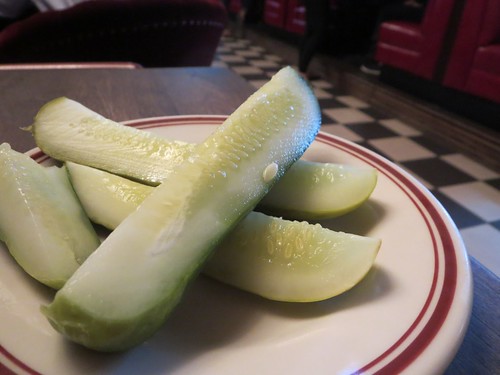
In life, some are sweet and some are sourpusses.
Lots of reviews, I’ll do a bunch of trendy places here, deal with some less famous places in the next one.
Back when I first started palling around with other Chowhounds, and especially when we launched LTHForum, those of us who were the core group were seriously hardcore— we were crazy, in that we thought nothing of driving an hour each way to go eat Tacos del Pacifico on the southeast side. As soon as Vital Information or Erik M. or Rene G or whomever found something, we’d take off for it, we had to have it, whatever it turned out to be. And we thought that we’d flush out dozens more crazy people like us over time, and to some extent we did, but we also had to adjust to the fact that not everyone who wanted to participate would turn out to be as willing to accept anything as we were. We had to adjust to people who wanted to tell us how wrong it was the way Burt ran Burt’s up in Morton Grove, and that he really needed to become more like other, normal pizza places— when it was the non-normalness that we loved about his place. Certain threads became dominated, not by people who had been there, but by people who hadn’t but who wanted to vet a place as thoroughly as possible before they went. It was a strange attitude to those of us who loved to take off for places in order to be surprised.
But apparently all that was nothin’ compared to how batshit people have apparently been getting at Brendan Sodikoff’s Dillman’s when they find that the deli— sorry, deli-inspired American brasserie— doesn’t have a deli case and sell corned beef by the pound. Outrage and personal offense, screaming and yelling, apparently. But Manny’s doesn’t have deli cases… yeah, but they aren’t in a location (the former Steve’s Deli) that used to have such things. Apparently these people have shown up wearing their jacket with the plastic pockets for carrying soup home, and they’re furious and confused by Dillman’s lack of a retail counter, and the overall look which is part Italian coffee bar, part power lunch joint with red leather booths, part Admirals’ Club at the airport… and no part the deli they expected.
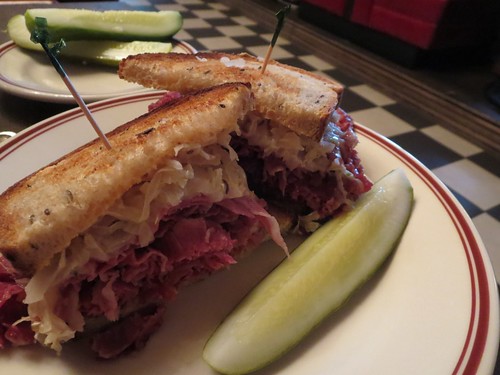
Me, I just don’t see what they’re getting so nuts about. Dillman’s aims to put a new Sodikoff spin on deli classics and I was mostly pleased with the changes (and accepting of the prices the changes came at). Delis may not abound, but there are enough traditional ones that it’s certainly worthwhile to have one place taking a fresh approach to the genre. And jeez, it’s not that hard to figure out; yeah, it may have a Sodikoff look (the enormous chandelier and so on) but there are plenty of traditional visual cues, like the checkerboard tile, that say old school deli, too. Also, they put the actual list of food items on a piece of paper for you to look at. It’s not that hard.
Anyway, I had the reuben, an order of potato pancakes and the pickles. In order of satisfaction: the potato pancakes are basically the very thin-cut (almost hairy) potatoes from other Sodikoff-restaurant dishes, like the duck heart gravy hash at Au Cheval. More hash brown cake than latke, so fine, but not really a latke. (Hint: a little egg would help.) The reuben was quite good; the corned beef had a rich, quality-beef flavor (much as Au Cheval’s vaunted burger does) but what really made it was the fact that the bread might have been, at the outside, four hours old when my sandwich was made. The freshness of the bread really lifted this sandwich up.
And the pickles were spectacular. I “demanded” my pickles like the sign says— they’re free but you have to ask— and there are two kinds. The “fresh” pickles taste as good as those ever do, at Kaufman’s or anywhere, and the sour ones taste even better, though not for the faint of heart. (They tasted, in fact, a lot like Jonathon Sawyer’s beer-garlic vinegar, which Publican Quality Meats sells, though that could either be because they actually use that, or simply because they had a similarly fresh garlic-vinegar bite.) Anyway, that so much love went into the thing you don’t pay for is a good sign indeed. Dillman’s is a new kind of deli. If you can’t hack that, your loss.

How come The Little Goat Diner doesn’t stump people in the same way? It surely breaks the diner mold as much as Dillman’s does the deli mold, yet somehow it’s universally loved. As you may recall I had lunch there a couple of months back and liked the food as food fine, liked it less as an expression of a chef’s philosophy. I returned for breakfast recently with my son, figuring that if Little Goat was going to shine at any meal, this would be it. I ordered something called Bull’s Eye French Toast, which proved to be toad in the hole and chicken and waffles (but with French toast) all in one, with slices of fried chicken breast and topped with strawberries and “bbq maple syrup” (Blis maple syrup which they add smoke flavor to). There’s no middle ground on a dish like that— it’s either going to be delicious or a godawful train wreck. It was the former; here was the working man’s version of Izard’s culinary philosophy of something sweet, something savory, something acid on the same plate. I would have preferred a real chicken leg and thigh, say, over this sliced up chicken breast thing that came a little too close to being chicken fingers to me, but apart from that, it was the rare cheffy, reinvented-breakfast dish that didn’t have you grumbling for them to leave breakfast the way they damn well found it.
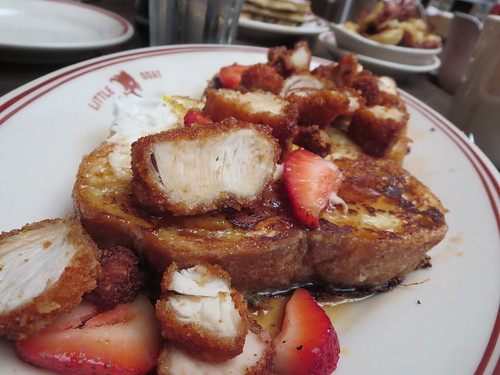
However, I did find execution from the busy (but not, just then, slammed) kitchen a little sloppy in spots— home fries came out sitting in a gross quarter inch of oil, and surreally, my French toast was topped with a single… kidney bean. (No harm, but odd.) But it certainly wasn’t, at least, because Izard isn’t onsite personally keeping an eye on the operation— while I was eating in the diner, I saw her go up to the pass and taste a dish (which she tweeted later that afternoon) and talk with the cooks about it for a bit, and by the time I got to the bakery next door, she was right there in the front window, kneading dough with one of the bakers.
Around the time of Pete Wells’ famous takedown of Guy Fieri’s restaurant in Times Square, I tried to think what would be the closest equivalent to that in Chicago, and I guess it would be this, in terms of TV celebrity having a splashy, tourist-friendly mid-priced spot. Except theirs is cynical to the core about providing a packaged pseudoexperience, and ours is sincere as can be about making happy food that’s easy to like and a little quirky. Chicago 1, New York O.
Speaking of drawing crowds, there’s been a lot of commentary that it’s more pleasant to go to Three Dots and a Dash at an off time, rather than Friday night at 8 p.m. when it’s full of frat boys, which is treated as if it’s an unusually keen insight into the nature of popular bars. Anyway, I went one relatively quiet Tuesday and on the plus side, my one drink (I was planning more till I tasted how strong that one was) made a strong case for Tiki as not just a silly fad, but a legitimate area of mixology. At least in Paul McGee’s hands, it wasn’t just fruit juice with lots of rotgut in it but a subtle and balanced drink of some complexity. And the soundtrack seemed appropriate to the vintage theme, which it apparently isn’t always (it is, after all, a project of the younger Melmans). What I don’t think it achieves— what popularity keeps it from achieving— is the intimacy which would allow a communion of drinkers and mixologists over tiki’s lore. I kind of think that already happened, back at The Whistler, and Three Dots, its Tiki drinks nailed down neatly on a printed page, is the final result of that shared interest, not a place for further colloquy.
Beyond that, my only complaint is… it’s not Tiki enough! It starts out well with the torches hilariously decorating a downtown alley way, and the entrance down a stairway decorated with skulls, but the room is just too orderly, a rectangle with tables set on a grid. It needs more wackiness, a big water feature in the middle or hula girls or something. Tiki is over the top, but Three Dots and a Dash is just a little too tidy— at least for what was, after all, the 1940s version of tune in, turn on, drop out.
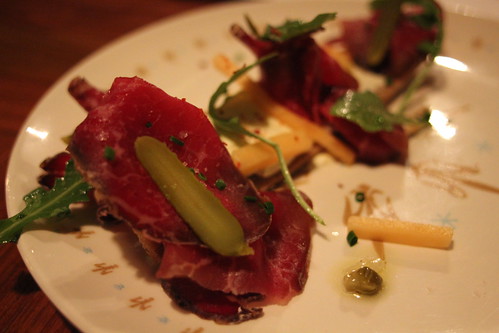
Matthias Merges’ second bar-restaurant (after Yusho), Billy Sunday, aims for classic Americana, and the interior looks like an old time ice cream parlor gone Goth. In a town where drinks are too often overly sweet, I really admired the simple tartness of many of the cocktails, including a whole list of tonics which ain’t kiddin’ about being tonics, not cocktails by another name.
So it was a surprise that all the sweetness seemed to go into the menu, which is short but so scattershot that it’s hard to pick out a theme in a bar snacks menu whose Americana ranges from a hot brown to baked gnocchi (actually, it doesn’t range, that was the entire entree list right there). Both of the “Things in Jars” we ordered were too sweet to finish, even with very good La Fournette bread—a sweet onion and eggplant marmalade, sure, that was expected, but chicken liver with “curried raisin mostarda” shouldn’t have been as sweet as jam, too. Off the “Snacks” menu, there were many ways one might have expected chipped beef to be reinterpreted, but the deconstructed version shown above, a canoe of rye toast topped with clotted cream and cold slices of dried beef, had to be one of the least comforting, about as “Americana” as a modern art exhibit.
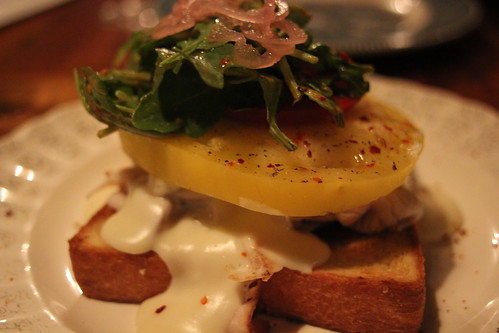
So my fellow diner and I were about to write Billy Sunday off for food, except we were still hungry, so we ordered one more thing. The hot brown wasn’t canonical (no bacon, the smokiness supplied by the turkey itself, and with perfectly in-season tomatoes on top) but it was terrific, exactly what one would want upscaled, modernized comfort food to be, and more understated and well-balanced than the excess that often passes for comfort food these days. How do you sum up a restaurant where you had three things that didn’t do it for you at all, and the fourth that you’ve been thinking about ever since, and that might end up on your ten best list for the year? I don’t know how to guide you; go have that hot brown while tomatoes are still good, and beyond that, you’re on your own.
Another item that said “hey, remember me for your ten best list” as soon as I ate it: a panzanella salad at Avec, now under Perry Hendrix, formerly of Custom House and Eggy’s Diner (which I liked a lot). This despite the fact that it barely lived up to its billing with corn and blueberries or something in-season like that; there were a couple of each, not enough to matter. What mattered was perfect farmer’s market tomatoes, garlicky dressing… it was summer in a bowl, as perfectly as you could ask. How is Hendrix changing Avec? I have no idea; the menu looked exactly like what I’d expect it to be at the beginning of September, many familiar things still on it, other things coming in with the season. Taking over Avec is maybe a little bit curatorial at this point, a non-broken restaurant that doesn’t need any fixing, just a sure hand to maintain it at the top of Chicago’s gastropubs, the top of our more casual chef-driven restaurants… the top of our restaurants, period.
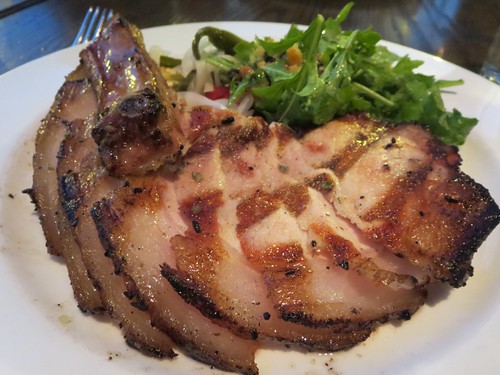
Speaking of catching our farm to table restaurants at their high points of in-season produce… we went to Nightwood for my wife’s birthday. I finally had the pork off the spit, which was melty tender and good, and other things I got a bite of here or there were mighty fine too… but again, it was a simple and vegetable-based thing in season that wowed the most. To be honest, I can’t remember exactly what it was— kind of a salad, I guess— I just remember sungold tomatoes, and corn, and little nubby bits of wild mushrooms, and… who knows what all. Just gorgeousness. I’ll have the gorgeousness, please.
I wrote a review of Longman & Eagle— first visit in over a year— but wound up putting all the good stuff into this Reader piece. Here’s the review part, reverse-engineered out of it:
I hadn’t been back simply because, by 2012, Longman & Eagle’s progeny were all over town (especially Logan Square) and I was trying them… Longman & Eagle was the rare restaurant that spoke perfectly to its moment—comfy porky small plates with fancy, we-could-make-everything-like-this-if-we-wanted touches, encyclopedic seriousness about beer and whiskey, a uniform of flannel shirts and alt-country on the sound system, a whiff of Portland “Don’t like it? Fuck you” attitude (though the Longman folks showed some very Chicago sardonic good humor in reprinting their worst Yelp review and handing it out as a postcard). Even Michelin realized that they needed to notice it if they wanted to look up-to-date, giving Longman & Eagle the only Michelin star won by a place that would piss off your grandparents.
Returning the other night, I found a Longman & Eagle that for the first time, ever so slightly, seemed to be preserving a lifestyle moment rather than embodying the current one…
But, as I said at the Reader, the dessert (“warm, squishy squares of doughnut in a mad Technicolor knife fight of bursting, wildly contrasting flavors, black sesame puree and coconut sorbet and puckeringly tart lime-palm sugar granita”) was spectacular.
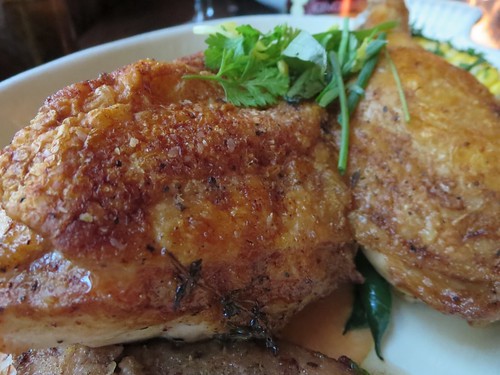
Chicken at Owen & Engine.
That said, as much as I admire Longman’s creativity and bold way with flavors, I have to say that two other places that plainly kind of followed in its path impressed me more recently than the things I had that night there. Pan-roasted chicken at Owen & Engine is a simple dish, but so beautifully done that it made me instantly regret having eaten so much of the very good grilled octopus that preceded it. By comparison, Longman’s chicken galantine was three times the work for less satisfaction, as much as I admired its smoky saucing and such. And The Fountainhead under Cleetus Friedman is quickly becoming my go-to neighborhood spot— partly because it’s far enough (a mile and some) that at least I get a good walk in. I think Cleetus is a great maker of housemade ingredients more than he’s a great chef, but any straightforward thing you have there— a burger, even a turkey sandwich— is going to be, to use a cliché of the moment, elevated by the care he took to make it what it is in-house. (A turkey sandwich sounds like boredom on a menu, but note that somehow this review has two of them in it— the hot brown is the other.) Add that I can always get a decent seat there (at Longman I am guaranteed the last, worst seat at the bar whenever I walk in) and the beer list is at least as good, and it’s a place that deserves loyalty in a transaction that’s entirely free of ‘tude, dude.
Disclosure: although I’ve met or worked with a number of the above chefs, all of the above were anonymous except Nightwood where we had a reservation, and all were paid for (though a birthday treat was sent out at Nightwood).


 Posted in
Posted in 
